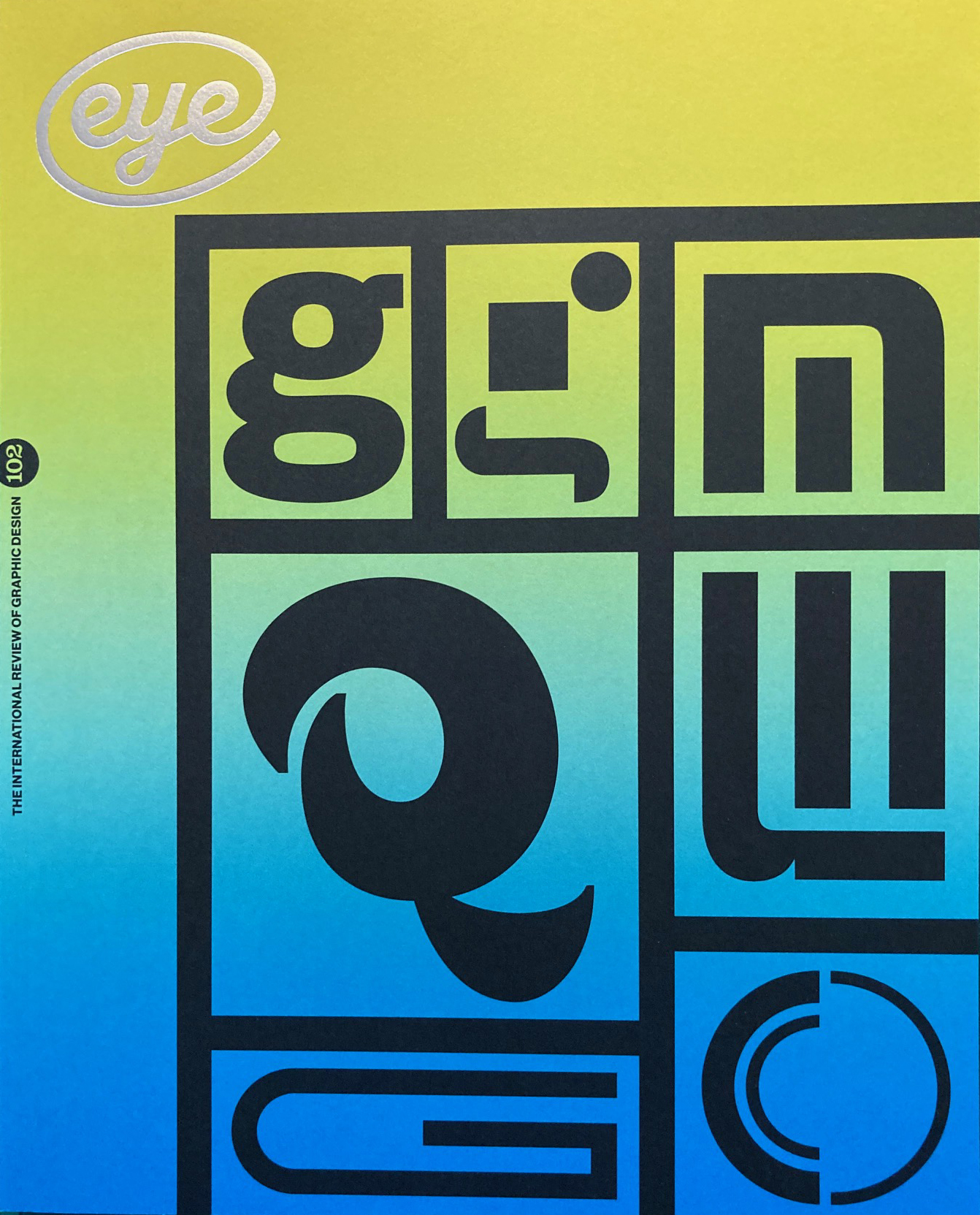Autumn 2021
Reputations: Thomas Huot-Marchand
‘It is not a question of revisiting a typographic style, but of questioning the means of creating typefaces, of establishing a new formal logic by pushing certain parameters to their maximum.’ Interview by Véronique Marrier
Portrait by Nicolas Waltefaugle.
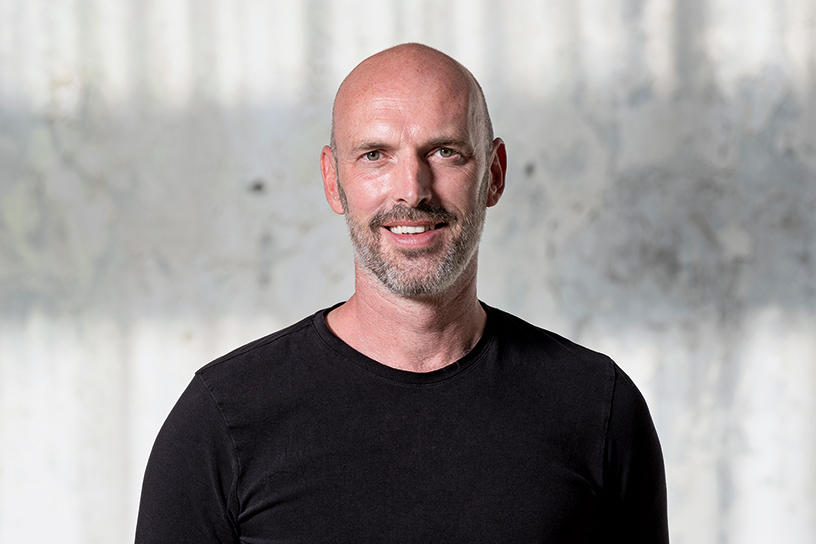
Thomas Huot-Marchand (b. 1977) graduated from the Institut Supérieur des Beaux-Arts de Besançon [ISBA] in 2001 and continued his postgraduate training at the ANRT (Atelier National de Recherche Typographique), where he designed Minuscule. He followed this with research on the epigraphic and calligraphic origins of fifteenth-century roman typefaces at the Académie de France à Rome. He published Minérale in 2017-18, then Garaje in 2020.
Huot-Marchand’s type design projects go hand in hand with his collaborations, notably with the agency Be-pôles (now Les Ateliers Saint-Lazare) and his custom work for them includes typefaces for the Park MGM hotel in Las Vegas and the Paris department store La Samaritaine, now open after sixteen years of restoration work. He is a tireless champion of type, whose workshops have helped to make many more French students aware of the field. His graphic design work has led to long-term collaborations with cultural institutions in eastern France.
As a teacher, Huot-Marchand has contributed to the emergence of a new generation of type designers, so it was a natural next step for him to take over the leadership of the ANRT when it reopened within the Nancy School of Art and Design in 2012. His skills as a designer; his appetite for research and for writing; and his ability to listen to and support research students have helped bring this venerable institution into the current era.
His insatiable curiosity and open-mindedness make him an important figure in the French graphics scene, evidenced by the presence of many of his designs in public collections. His typefaces are distributed by the Lyon-based foundry 205TF.
Specimen for Samaritaine Sans (capitals only), 2021.
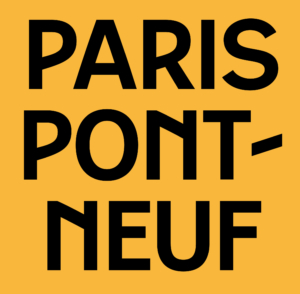
Samaritaine, custom type designed by Huot-Marchand for the legendary department store in Paris. He explains that the wordmark is a kind of synthesis signs that evoke a French Art Nouveau / Art Deco style for the sans, while the serif is a loose interpretation of the typographic genre l’Elzévir Français.
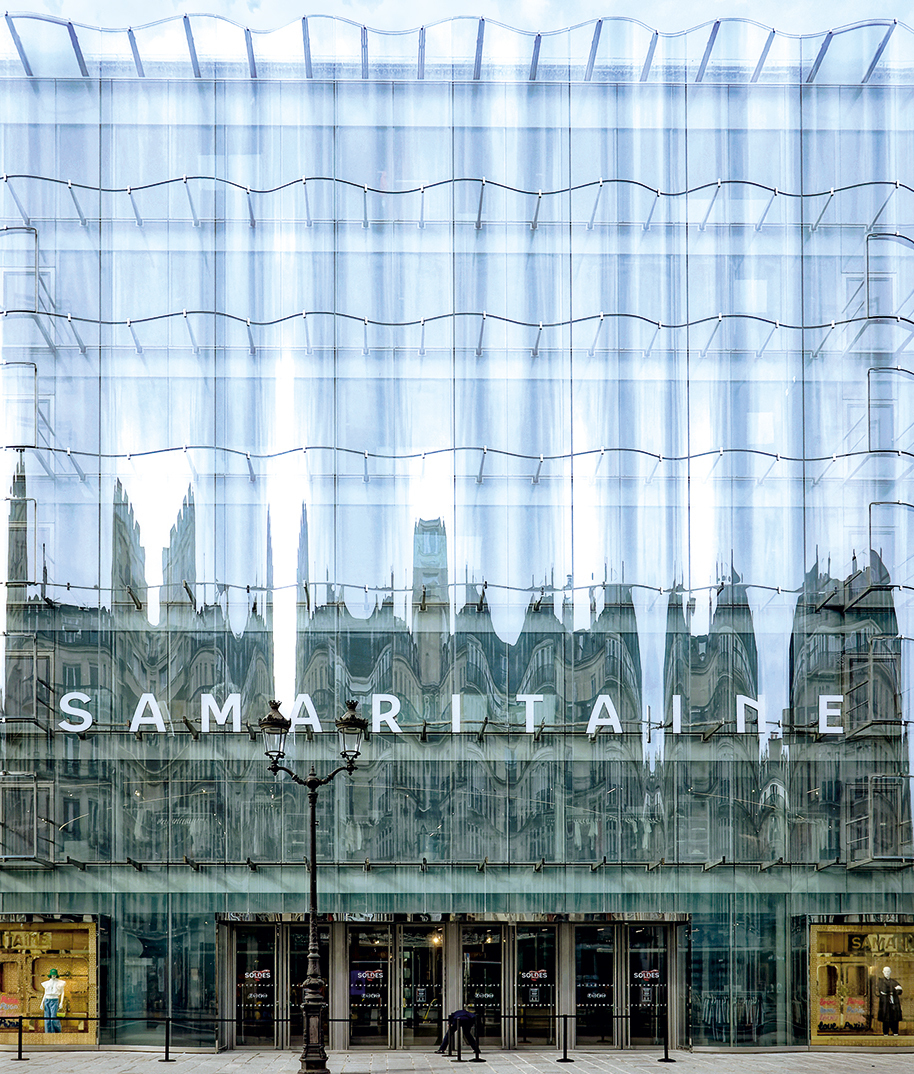
Véronique Marrier: How did you find out about typography?
Thomas Huot-Marchand: At art school in Besançon, where I studied, it immediately fascinated me. Looking back, I can see that I liked it even before – in the world of skateboarding and graffiti – but I had no idea what lay behind it. During my studies, I started teaching myself to draw typefaces. One of my teachers, Claude-Laurent François, used to talk humorously about ‘garage owners’ lettering’ to describe vernacular inscriptions, and I ended up making that the subject of my degree project. This was (already) Garaje.
I then went on to do postgraduate research in typography at ANRT, which had a lasting influence. The head of the school was Peter Keller, a remarkable man. I started drawing Minuscule here.
Your activities are divided between research, type design, graphic design and teaching. How are these different activities articulated and nourished?
I have always done all these things at the same time. I started teaching when I was young, after graduating in 2002. Right from the start, I decided to work freelance. I have never worked in an agency – I didn’t even do an internship during my training. My graphic work quickly settled into the cultural sphere, where I had a little bit more freedom and subjects that interested me. I started to create typefaces for every job. Clients rarely ask for that but I do it anyway. I pretty much only use my own typefaces. Not that I don’t like other people’s, but it is a way for me to get to grips with the job, to create my own tools. This is how my own personal research has developed, sometimes over quite long periods.
The role of research has become more important since I’ve been head of ANRT. This also includes supporting other people’s research. That may sound like four different jobs, but for me they are all the same thing: whether it is in the archives or part of a job, with words or with shapes, it is all about telling stories. This narrative dimension of design, more than its supposed ‘function’, is what interests me most. I carry out all these activities at the same time, in quite a haphazard way, constantly switching from one to the other when I feel like it.
Has your way of working and how you approach these different aspects of your work changed over time?
Yes, especially when it comes to type design. As I said, it started more as a personal practice: I published Minuscule in 2007, but I kept the fonts I developed stashed away for a long time. Some projects, such as Garaje, have kept me busy for years. In 2017, Damien Gautier suggested he, Matthieu Cortat and I pool our catalogues. That is how 205TF was launched. I am very happy with this collaboration because, thanks to all the work the foundry does, I can now publish fonts much more frequently – a family per year, on average.
Contributing to 205TF and drawing custom typefaces more often means that type design occupies a bigger place in my work today. I am happy about this: I love the freedom, the independence and the special temporality that this practice grants. I also love that now my typefaces are living their own lives and other people are using them …
Let’s talk about distribution: in 2007 you created your own foundry, 256TM. However Minuscule, Minérale, Garaje and Album are now distributed by 205TF. Why did you decide not to distribute your typefaces yourself?
In 2007, the typographic landscape was different from today. There were a lot fewer independent foundries, and I could not see myself in the online catalogues then. I wanted to maintain control over the communication and distribution of my typefaces, so I thought setting up a ‘micro-foundry’ was the right option. I made a website, and sales got off to a good start: Minuscule won several awards (TDC, Typographica, etc.) and was written about in a number of publications. It was not going badly, but I admit that I have no talent for marketing fonts: it is a lot of work, and I am not interested in it. Proof that I do not take it very seriously is the fact the 2007 website has not changed at all.
Ten years later, 205TF gave me a fresh start. I like the way this foundry works, not only because it is run by friends of mine, but also because it is cooperative. There is an editorial committee where we discuss the next releases: many young designers have joined us, and the catalogue has diversified, while maintaining a fairly French style (precisely, perhaps, thanks to this diversity). I stopped selling Minuscule myself and added it to the 205TF catalogue. Immediately after that, I launched Minérale, which I had been working on for a few months, in 2017, and Minérale Italics in 2018. This was followed by Garaje, which I completely reworked. It was a crazy project: a family of 445 fonts, 44 different widths, tens of thousands of glyphs … It came out in early 2020, twenty years after the first drawings I made during my studies in Madrid. Finally, in 2020, I was able to complete another family that I had initiated a long time ago – Album.
In what context did you first conceive the type family Album?
This is a longstanding project, which started in 2010 when we won (together with Philippe Millot) the competition for updating the typography for the Musée d’Orsay. The museum wanted to return to the original visual identity of 1986 – a masterpiece designed by Jean Widmer and Bruno Monguzzi, but also Gérard Plénacoste and, later, Philippe Apeloig – by offering a wider palette than the original Walbaum. We kept it, imagining ‘cousins’ that would have appeared later in the nineteenth century: a range of titling capitals, and for the text a thin slab serif (evoking typewriter characters) and a bold sans, all of which share the same DNA as Walbaum. In the end, the Orsay type was almost never used.
When the exclusivity period ended, I completely reworked the typeface, expanding the range of weights and correcting the design. The grotesque version was particularly interesting to design: it is a very common typographic genre and the typeface’s identity stems from tiny details. I stuck to this ‘historical fiction’ of a sans serif Walbaum, which I originally called Walbaum Plain. It’s not a great name, so when it was launched I took out two letters, and Walbaum became Album.
How would you describe the current landscape of this field in France?
French typography is doing wonderfully. After the deep crisis of the 1970s, which saw French foundries disappear, the job of rebuilding started, with education playing a central role. There are now many excellent training courses in France, and the landscape is very diverse. Over the past ten years, independent foundries have developed, and many talents have come to the fore. Many more women have entered the profession, which is a great thing. France looked like a sleeping giant but, in my opinion, it is one of the most dynamic places in the world today.
You regularly collaborate with the agency Les Ateliers Saint-Lazare to design tailor-made typefaces – I am especially thinking of the one for the newly reopened La Samaritaine department store. This is yet another facet of your work …
Yes, I have been fortunate enough to collaborate with them regularly in recent years. It can be in an advisory role, correcting lettering, or sometimes drawing complete families. It allows me to explore typographic styles that I am not used to drawing, such as the French Elzévirs for La Samaritaine, and work to tighter deadlines. The agency’s projects – it is based in both Paris and New York – are always very ambitious: needless to say, working alone in Besançon, it would be difficult for me to reach such a clientele. It is nice to work with people who have such high standards and such attention to detail. They give me a lot of freedom to come up with things, and I am always impressed with the way they use them.
What projects have you got in the pipeline? Are you currently working on a new typeface?
Yes! Another thing that has been lying around in my files for a long time is a monolinear Bodoni; it is called the Mononi. With each of my typefaces, I try to experiment with new drawing methods: this time they are stroke fonts, drawn from their skeleton. It may seem contradictory to make Bodoni typefaces without any contrast, but I like this paradox. I started this family in 2008, for the identity of the Théâtre musical de Besançon, which is based in a building by Claude-Nicolas Ledoux that dates from the 1780s. At the same time, Bodoni published Dafne e Cloé and his style reached maturity in the typeface that he cut for that work.
I designed Mononi for my personal use, for a specific project: the family developed over the course of the four seasons that I worked for the theatre. Then the theatre merged with the Scène nationale de Besançon, and its visual identity evolved, but it never stopped being a laboratory for me to develop new typefaces. I look forward to releasing Mononi with 205TF, as stroke fonts (letterforms without any contrast, where the weight is independent of the drawing) have always been a special interest of mine. There are some experiments to be made here, especially for CNC or laser engraving.
I am launching another typeface in 2022; it is the fruit of my experiences in Rome in 2006-07, then later during my residency at the Hoffmitz Milken Center for Typography in 2019. Its name is Roman, a reflection on the structure of the early romans of the fifteenth century, and a kind of crash test of Gerrit Noordzij’s theories on the ‘translation contrast’ from the stroke of a broad-nibbed pen. Starting from the internal structure (again), I ‘project’ the skeleton on different axes, at different angles and at different distances. This systematic calligraphy gives unexpected results and highlights the limits of this paradigm. In Rome I did not manage to turn my experiments into digital fonts. Now, a few years later, variable font technology is allowing me to take this project further.
How would you define your approach or your graphic style?
I try to keep a big element of play in the graphic systems that I put in place: this can come from arbitrary constraints, combinatorial shapes, which are often geometric, or even small printing tricks. Each project gives rise to its own little story. The same goes for typefaces: they are all developed using different methods. It is not just a question of revisiting such and such a typographic style, but of questioning the means of creating typefaces as much as possible, of establishing a new formal logic, by pushing certain parameters to their maximum. I try to avoid complacency: when a principle is found, it must be accepted and extrapolated – that is a good way to make discoveries. It leads me to produce shapes that are sometimes weird, awkward, or wrong, but that is fine with me.
Over time, my work has become focused more on personal research than on commissions. Such work takes place at a different tempo, which allows me to take a step back. It is the narrative dimension of typographic design that interests me. I love literature and I like to believe that with typefaces I, too, tell stories, on the surface of words.
Garaje Condensed Black, in a specimen that shows different widths with the same stroke weight. Garaje is a complete system, available in 44 widths and five weights, permitting users to compose in many sizes without changing the stem weight.
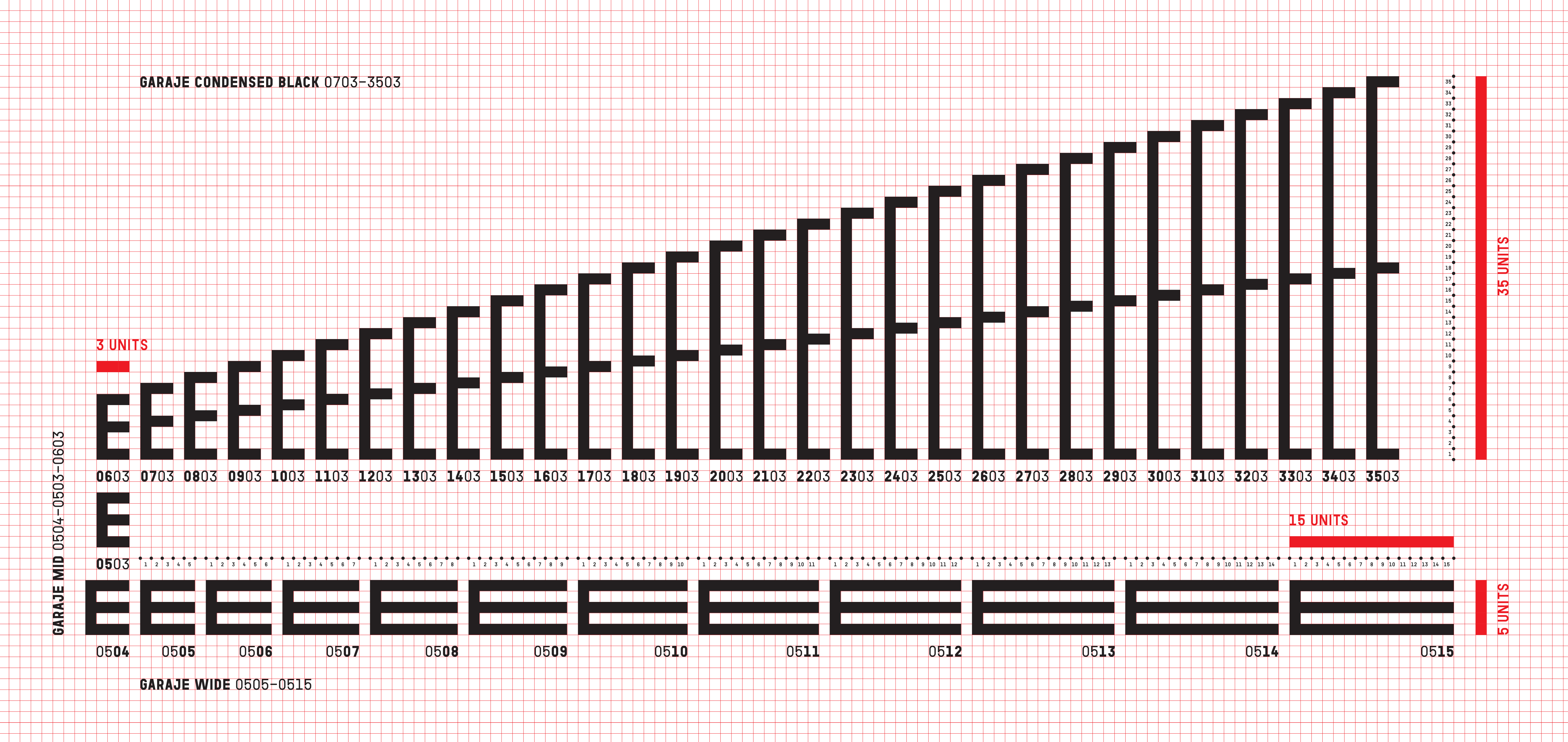
Véronique Marrier, head of graphic design, CNAP, Paris
Translated by Deborah Burnstone
Read the full version in Eye no. 102 vol. 26, 2021
Eye is the world’s most beautiful and collectable graphic design journal, published for professional designers, students and anyone interested in critical, informed writing about graphic design and visual culture. It is available from all good design bookshops and online at the Eye shop, where you can buy subscriptions and single issues.

